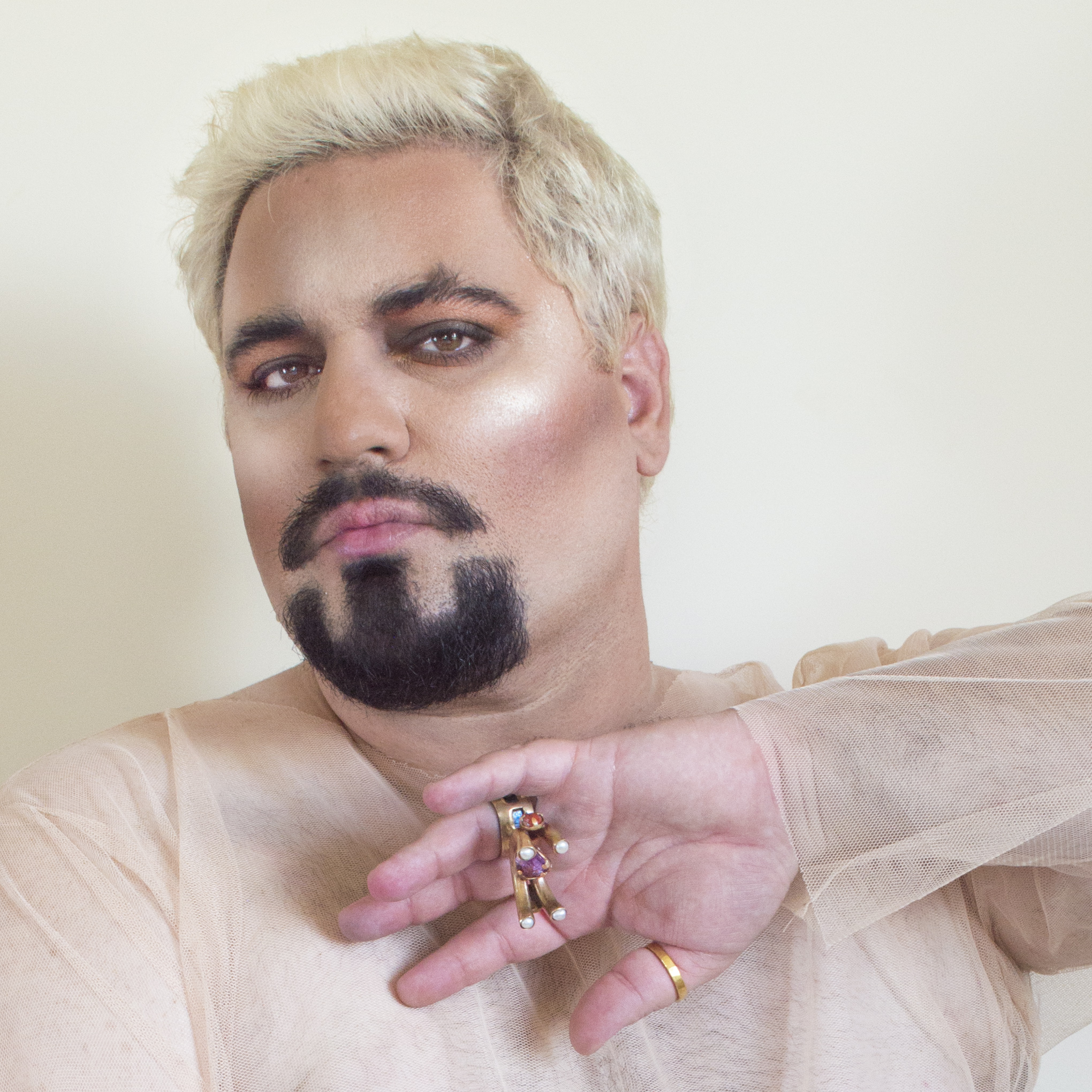Regional Spotlight Artist Profile | Adam Anderson
The inaugural Regional Spotlight exhibition is a showcase of artistic talent from across the region. Developed from an expressions of interest process, the exhibition brings together painting, drawing, photography, and sculptural works by artists living and working in the Wide Bay-Burnett. The Regional Spotlight initiative is an opportunity for artists at any stage in their career, working in any visual art medium, to receive mentorship and share their work at the gallery. Adam Anderson is a local artist in our upcoming Regional Spotlight exhibition opening on 21st September 2024.
How long have you been making artwork?
I grew up in Israel in a very small agricultural community South of The Dead Sea. In pre-school and first grade I started having learning difficulties, so my parents sent me to an art therapist. I started making art as a therapy in the early 90s, when I was 6 years old.
What are your favourite mediums to work with and why?
My favourite mediums change throughout the years and alongside my practice, which similarly changes. In the past, my favourite mediums included makeup, conte crayons, food colouring and rosewater, oil paint, and found objects. More recently, however, I’ve been enjoying working with a large variety of gemstones, metals such as silver, gold, copper, and titanium, linen fabric, photography, and Photoshop. My love of gemstones, in particular, is almost reverent. I find their formation and unique properties fascinating, especially those that come from the earth or from living things. Similarly, metals possess in many ways an extension of what I love about gemstones, but are more mutable in nature which gives each metal distinct properties when worked with. Some metals are also intrinsically embedded within the history of humanity, and in my case, this is especially true of silver—which has been worked by North African Jewish silversmiths for millennia.
Who/what inspires or influences you?
My primary influence is my own lived experience and identity and the way that these encounter and are absorbed by society: fragmented, politicised, and rendered meaningful or meaningless by outside parties. For example, my queerness is something that others largely celebrate these days (which wasn’t always the case), while my background as an Israeli and Jew is—at best—tolerated as an insignificant obstacle to my “validity” as a progressive and artist. Beyond being just about myself, my art practice encourages others to pay attention to the gaps that exist between who they are and how that becomes activated or silenced within society, as a means of reclaiming agency and dignity for oneself, and extending that to others as well. I’m deeply inspired by my cultural, ethnic, historical, and religious ties to Israel and Judaism.
Has your practice and subject matter changed over time? If so, how?
From a conceptual point of view, my art practice has always been centred on identity as a whole, often with projects that focus on particular themes within that greater narrative. Not surprisingly, since the October 7th Massacres in Israel, my attention has been focused on what it means to be Jewish and Israeli, how those facets of my identity are received in contemporary Australian art and society, and resisting the immense tidal wave of antisemitism that is sweeping the world yet again.
In physical terms, my art practice has changed frequently and significantly as time has passed, especially in the last 15 years or so. When I started making art I was practising mostly drawing, painting, and ceramics. I then incorporated photography, the body, drag, and soon after animation and video into my practice, which facilitated the additional inclusion of performance, costuming, projection, and makeup into my practice. As more time passed, I increasingly emphasised the use of ritualistic objects such as jewellery and garments, which led more or less into my current practice which is an amalgam of all those things.
What do you like most about living in the region?
I spent my high-school years in this region after migrating from Israel in 1998, and I returned to live in Israel between 2008 and 2012. When I returned to Australia in 2012, I worked for a couple more years in the region in order to make enough money to bring my partner here and to go live in Brisbane to finish my art degree. Finishing my PhD during the COVID-19 Pandemic, I realised I wanted to be closer to my parents, and I wanted to be able to see more of the sky and less people and buildings. What I love about this region is that my parents are here, there’s an engaged cohort of artists and art workers, and the skies never fail to be huge and beautiful.
What advice would you give your younger self?
I wouldn’t.
What is the most interesting feedback you have had about your work?
The most interesting feedback I get about my work always comes from my mother. A formative interaction I had with her was one where I asked her what her first association is with the word “fetish,” knowing that for everyone else I’ve asked the answer was something to do with feet and kink. Her reply was that it was related to superstition. Her association was directly informed by her upbringing in an Algerian Jewish environment, and would probably be shared by many people who grew up on the African continent. It was a milestone in my understanding of my own fascination with fetish objects and their proper place within the realms of the mystical, the surreal, and the intersection of spirituality and the body.
